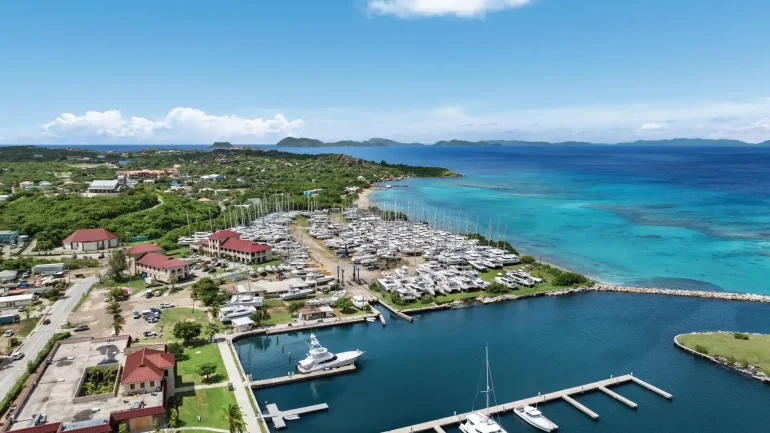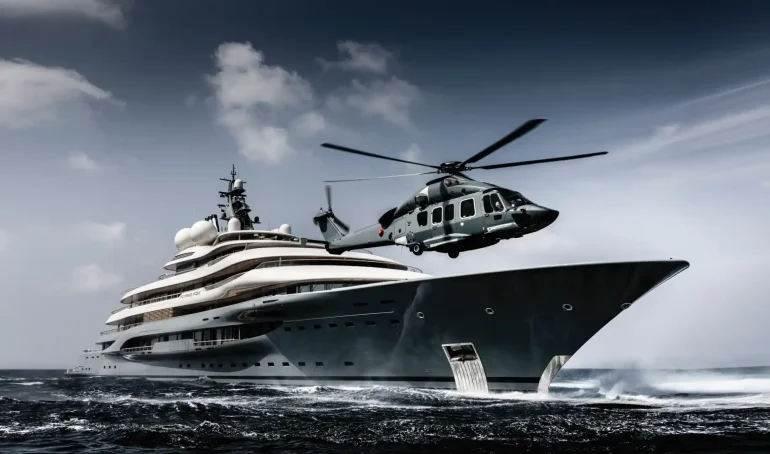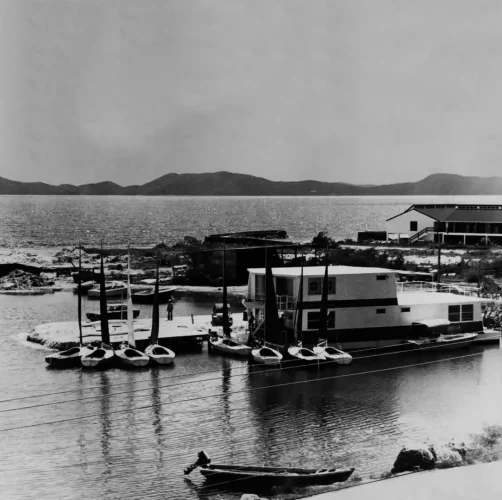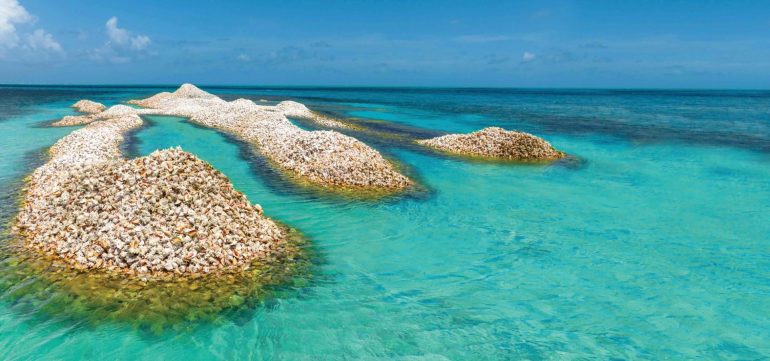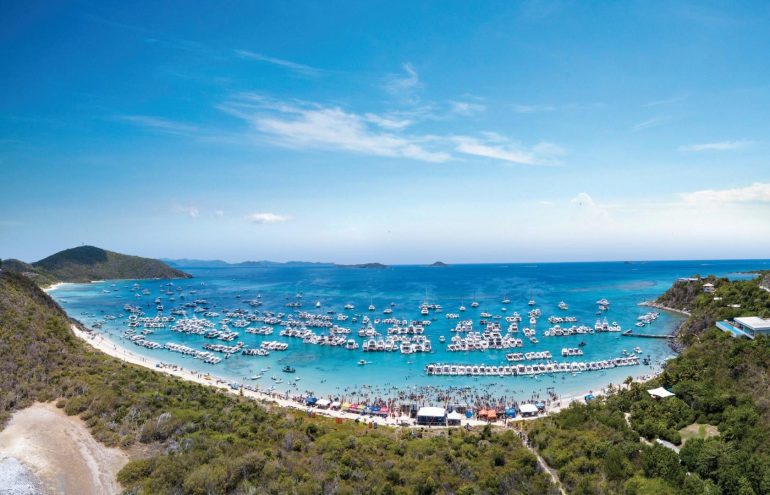Dinghy Sailing Solo
I started my first solo dinghy sailing lesson on land. At Manuel Reef Marina, Alison Knights Bramble asked young sailor Akeem David to help with my land drills by pulling out the Pico on the trailer and providing counterbalance by sitting on the boat as she showed me how to tack and gybe on the small, blue plastic boat. I hopped on after watching and imitated her actions. Each time she moved the sail from one side to the other, I ducked my head under the boom and figured out how to switch hands with the tiller behind my back. This seemed pretty easy to handle on land, and I got the hang of it pretty quickly.

After Alison was satisfied with my lessons on land, she asked me to bring the boat down the ramp to the water. Since I’m a newbie sailor and pretty oblivious to wind direction, I tried to aim the boat directly at the ramp, with its mainsail up, and was almost run over when the force of the wind in the sail pushed against the dinghy on the trailer. I looked for telltales on the boat and a wind direction indicator on top of the mast, but there were none. I had to note where the wind was coming from based on how I was getting pushed off the dock. This may have been when I got my first inkling that I learn the most when I screw up. Luckily, I screw up a lot.
Once I was in the boat and on the water, Alison instructed me to follow Akeem and sail between the pink buoy and the white buoy—gybing at the pink one and tacking at the white one—to get a feel for the sail and the maneuverability of the boat. I sailed to the pink buoy, pulled the tiller towards me to gybe, and as the sail swung around, I forgot to move to the other side of the boat. The Pico tottered, and I fell in. Unfortunately, Dan had his camera nearby, so he got a few shots of me in the murky water. Alison drove the safety RIB my way as I swam back to the Pico and mentioned that I probably shouldn’t let go of the boat the next time I fall in. Another lesson learned.
Though I have a broadcasted fear of capsizing and falling in, it wasn’t scary at all. I just ended up swimming a bit, one of my favourite pastimes. And I was able to pull myself up with relative ease using the toe strap. I continued to sail between the buoys, mostly trying to remember how to switch my tiller hand without letting go of the tiller or the mainsheet, something that had seemed so easy to do while the Pico had happily rested on the trailer during my land drills.
Soon, the other sailors arrived, and those of us in Picos were supposed to sail a triangle between the pink buoy, white buoy and a red buoy that was closer to the channel. My first attempt to complete the triangular course went fairly smoothly. I had to tack a few times to get upwind to the red buoy. The next time I was heading for the red buoy, I’d managed to sail a bit off course so that a large trimaran was in my way, and I realized that I was going to have to tack to avoid the big boat.
Before I tacked, I observed the trimaran’s anchor rope and thought that I would clear it. I didn’t. My daggerboard got caught, and I was stuck. Thankfully, one of my recent assignments at work had been editing Alison’s children’s novel, The Eye of the Storm, and I recalled when the young protagonist Ben got tangled in a buoy rope and his friend Charlie rescued him. She instructed the boy to pull up the daggerboard to clear what was caught beneath. I followed Charlie’s instructions and pulled out the board and set it in the boat then I was free to float away—straight between two hulls of the 60’ trimaran Grand Oasis.
The Pico’s mast butted against the edge of the trampoline and kept me from sailing under it. Of course, this wasn’t one of those times when the owner was away and ignorant of my entanglement. He arrived in his RIB and towed me out from between the hulls. But I didn’t have my daggerboard in, so I couldn’t exactly steer away. Instead, I banged against the starboard hull. He yelled at me to push away from his yacht, but Alison, who had arrived in the RIB, calmly advised me that my little plastic Pico wasn’t going to hurt his big boat and that I needed to reinsert my centre board, push my tiller out until I caught some wind and sail away. I did.
Another lesson. After that, Alison prompted me to follow behind the rib with the Pico, and I somehow managed to do so, tacking whenever I needed to stay in the path of her zigzagging wake. As in previous lessons, once I sailed without thinking too much, I followed my instincts and felt like I’d gotten the hang of it. My confidence returned as I skippered the boat solo around Manuel Reef. I still haven’t quite figured out the wind thing yet, but I’ll get the hang of it the more I sail. One last lesson involved the boys coming over to me in the RIB and tipping the boat over—to address my fear of capsizing. I enjoyed righting the boat by using my body weight on the daggerboard. Then they mentioned something about learning how to climb in the boat from the dagger board, all in one fluid motion as I set the boat upright, but that sounded a bit too graceful for this clumsy sailor.

